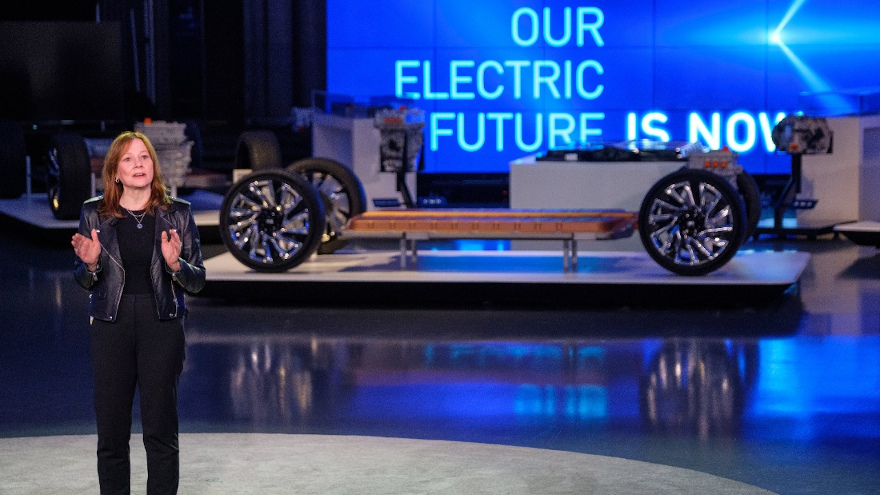GM sets agenda for departing internal combustion engine world

GM chairman and chief executive officer Mary Barra announced that the automaker plans to eliminate tailpipe emissions from new light-duty vehicles by 2035. Photo by Steve Fecht for General Motors.
While it likely will be some time before the decision significantly impacts your dealership’s used-vehicle industry, General Motors put a timeline on when it wants to depart from the business of manufacturing vehicles that run on gasoline or diesel fuel.
On Thursday, GM announced that it is looking to eliminate tailpipe emissions from new light-duty vehicles by 2035 along with the intention to become carbon neutral in its global products and operations by 2040.
“General Motors is joining governments and companies around the globe working to establish a safer, greener and better world,” GM chairman and chief executive officer Mary Barra said in a news release. “We encourage others to follow suit and make a significant impact on our industry and on the economy as a whole.”
With a fleet of vehicles operating on electricity, GM also acknowledged that it is critical that they be charged with electricity generated from renewable sources like wind and solar.
In the news release, the automaker noted that it has worked with utilities and developers to support investments in renewable energy found in and around communities that have GM facilities via power purchase agreements and green tariffs.
The company said it is also working with EVgo to triple the size of the nation’s largest public fast charging network by adding more than 2,700 new fast chargers by the end of 2025, a move set to help accelerate widespread electric vehicle adoption. GM said these fast chargers will be powered by 100% renewable energy.
“GM believes that the energy sector is well on its way to a decarbonized grid and that an all-electric future will be supported by renewable infrastructure and technology,” the company said.
GM highlighted that will offer 30 all-electric models globally by mid-decade and 40% of the company’s U.S. models offered will be battery electric vehicles by the end of 2025.
GM also said it is investing $27 billion in electric and autonomous vehicles in the next five years — up from the $20 billion planned before the onset of the COVID-19 pandemic.
This investment includes the continued development of GM’s Ultium battery technology, updating facilities such as Factory ZERO in Michigan and Spring Hill Manufacturing in Tennessee to build electric vehicles from globally sourced parts and investing in new sites like Ultium Cells in Ohio as well as manufacturing and STEM jobs.
The company went on to note that more than half of GM’s capital spending and product development team will be devoted to electric and electric-autonomous vehicle programs.
“And in the coming years, GM plans to offer an EV for every customer, from crossovers and SUVs to trucks and sedans,” the company said.
GM added that it worked with the Environmental Defense Fund to develop a shared vision of an all-electric future and an aspiration to eliminate tailpipe emissions from new light-duty vehicles by 2035.
“With this extraordinary step forward, GM is making it crystal clear that taking action to eliminate pollution from all new light-duty vehicles by 2035 is an essential element of any automaker’s business plan,” Environmental Defense Fund president Fred Krupp said in the news release.
“EDF and GM have had some important differences in the past, but this is a new day in America — one where serious collaboration to achieve transportation electrification, science-based climate progress and equitably shared economic opportunity can move our nation forward,” Krupp went on to say.


